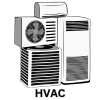Here’s a detailed comparison of Flat Tappet vs Roller Camshaft systems — both crucial components in how valves are actuated in internal combustion engines:

1. Basic Definitions:
Flat Tappet Camshaft:
- Uses lifters (tappets) with flat or slightly convex bottoms.
- The cam lobe slides against the lifter.
- Older, simpler technology.
Roller Camshaft:
- Uses lifters with small rollers (bearings) that roll over the cam lobe.
- Reduces friction and wear.
- Common in modern and high-performance engines.
2. Detailed Comparison:
1. Lifter Design
A flat tappet camshaft uses lifters with a flat surface (slightly crowned) that rides directly on the camshaft lobe. In contrast, a roller camshaft features a small roller or wheel at the bottom of the lifter, which rolls along the cam lobe surface instead of sliding.
2. Type of Contact
Flat tappet camshafts rely on sliding friction, where the lifter slides over the lobe. This increases friction and potential wear. Roller camshafts, on the other hand, utilize rolling contact, which significantly reduces friction and mechanical wear.
3. Wear Rate
The wear rate is higher in flat tappet camshafts, especially if the engine is not maintained with proper oil additives like ZDDP (Zinc Dialkyldithiophosphate). Roller camshafts have a lower wear rate due to the rolling action, making them more durable in the long term.
4. Lubrication Requirements
Flat tappet camshafts are highly dependent on ZDDP-rich oils to form a protective film that reduces metal-to-metal contact. Roller camshafts are less sensitive to specific oil additives because the rolling action minimizes direct contact.
5. Performance Potential
Flat tappet camshafts offer moderate valve lift and duration, suitable for standard applications. Roller camshafts allow for more aggressive lift and ramp profiles, enabling better airflow, improved combustion, and higher engine performance.
6. Friction and Efficiency
Flat tappets suffer from higher friction losses, which can reduce engine efficiency. In comparison, roller camshafts offer lower friction, improving both fuel efficiency and power output.
7. Lifespan
Due to their higher wear and sensitivity to lubrication, flat tappet camshafts generally have a shorter lifespan if not properly maintained. Roller camshafts are more durable and last longer, especially in high-performance or high-mileage engines.
8. Cost
Flat tappet systems are cheaper to manufacture and are often found in older or budget-oriented engines. Roller camshafts are more expensive due to their precision components and added complexity.
9. Mechanical Complexity
Flat tappet designs are simpler and easier to maintain. Roller camshafts are more complex, especially when using hydraulic roller lifters, which require more precise engineering and control systems.
⚙️ 3. Performance & Applications
| Use Case | Flat Tappet | Roller Camshaft |
|---|---|---|
| Older engines | Common in classic engines (pre-1990s) | Rare |
| Modern engines | Mostly phased out | Standard in most fuel-efficient and performance engines |
| High-RPM racing | Limited use due to wear | Preferred due to durability and higher lift |
| Daily drivers | Less common today | Common (especially hydraulic roller lifters) |
Oil Requirements:
- Flat Tappet Cams need high-ZDDP oil (zinc/phosphorus) to prevent lifter and lobe wear, especially during break-in.
- Roller Cams are less sensitive to oil additives and offer lower maintenance risk.
Maintenance & Upgrade Considerations:
- Flat Tappet:
- Must be broken in carefully with special oil.
- Lifter and cam wear can lead to performance loss.
- Cheap but needs more attention.
- Roller Cam:
- Higher initial cost.
- More reliable long-term.
- Excellent for high-performance builds, fuel economy, and emissions control.
✅ Conclusion
| Choose Flat Tappet if: | Choose Roller Camshaft if: |
|---|---|
| You’re restoring a vintage engine | You want performance + longevity |
| Budget is a major concern | You’re building a high-RPM or modern engine |
| You’re okay with using specialty oil | You want low maintenance and efficiency |
While flat tappet camshafts are cost-effective and simpler, they require careful maintenance and offer lower performance potential. Roller camshafts provide better efficiency, durability, and performance, but come with increased cost and complexity. The choice between them depends on engine design, intended use, and budget.
Also Read : Flat tappet vs roller. which is better?
Other courses:



